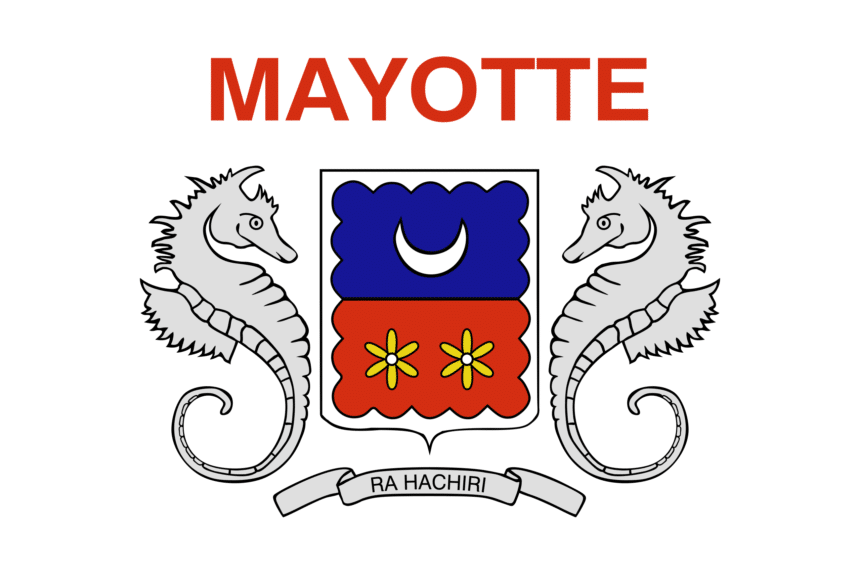Mayotte, an overseas département of France nestled in the Mozambique Channel of the western Indian Ocean. Situated approximately 190 miles (310 km) northwest of Madagascar, Mayotte comprises two main islands: the expansive Mayotte, also known as Grande Terre, and the smaller Pamandzi, or Petite Terre, connected by a causeway to the rocky outcrop of Dzaoudzi. With its rich history, diverse culture, and unique geographical features, Mayotte stands as a captivating destination worthy of exploration.
History of Mayotte
The history of Mayotte is a testament to its resilience and cultural dynamism. From Arab invasions in the 15th century to colonial control by the French in the 19th century, Mayotte has witnessed a tapestry of influences shaping its identity. The island’s strategic location in the Indian Ocean facilitated interactions with diverse civilizations, resulting in a rich amalgamation of traditions and customs. Despite geopolitical challenges and territorial disputes, Mayotte’s journey toward self-determination and integration into the French Republic underscores its enduring spirit and quest for autonomy.
Geography and Climate of Mayotte
Mayotte boasts a diverse landscape characterized by volcanic mountain ranges, lush tropical forests, and vibrant coral reefs. The main island is dominated by a north-south chain of volcanic mountains, with peaks ranging from 1,600 to 2,000 feet (500 to 600 meters) in elevation. Surrounding coral reefs provide protected waters ideal for shipping and fishing activities. The climate is warm, humid, and maritime, with average monthly temperatures ranging from 75 °F (24 °C) in August to 81 °F (27 °C) in December. The island experiences abundant rainfall, with an average annual precipitation of 200 inches (5,000 mm), sustaining its lush vegetation and biodiversity.
The population of Mayotte is a vibrant tapestry of cultures, reflecting its diverse historical influences. The majority of the population comprises Mahorais of Malagasy origin, who predominantly adhere to the Sunni Muslim faith. French culture has also exerted a significant influence, with French as the official language. Additionally, Comorian, closely allied to Swahili, is widely spoken, alongside Malagasy dialects in certain coastal villages. Urban centers such as Mamoudzou, Koungou, and Dzaoudzi serve as focal points of cultural exchange, where traditions intertwine with modernity.
Economy and Trade of Mayotte
Mayotte’s economy is multifaceted, with the service sector playing a pivotal role in employment generation. Key sectors include health services, telecommunications, and computer services. Agriculture, primarily concentrated in central and northeastern plains, encompasses the cultivation of cash crops such as vanilla, ylang-ylang, coffee, and coconuts, alongside subsistence crops like cassava, bananas, corn, and rice. Ylang-ylang extract and farmed fish constitute major exports, while imports encompass food products, machinery, chemicals, and transport equipment. Metropolitan France serves as Mayotte’s primary trading partner, underlining its economic interdependence.
Governance and Administration
As an overseas département of France, Mayotte operates within the framework of the French administrative system. It is represented in the French National Assembly by a deputy and in the French Senate by two senators. The island is administered by a French-appointed prefect and an elected Departmental Council. Despite its integration into the French administrative structure, Mayotte’s status has been subject to dispute, particularly by Comoros, which has claimed sovereignty over the island since its declaration of independence from France in 1975. However, Mayotte’s population has consistently advocated for its status as an integral part of France, culminating in its transition to an overseas département in 2011.
Healthcare and Education in Mayotte
Mayotte prioritizes healthcare and education as pillars of societal development. The island features several small hospitals and dispensaries catering to the healthcare needs of its population. Malaria, parasitic diseases, and tuberculosis remain significant health challenges, necessitating ongoing efforts in disease prevention and treatment. The educational landscape encompasses traditional Islamic schools alongside primary and secondary institutions established by the French, fostering a holistic approach to knowledge dissemination.
Mayotte epitomizes the convergence of history, culture, and natural beauty, offering a captivating mosaic of experiences for enthusiasts of exploration and discovery. From its breathtaking landscapes to its vibrant cultural tapestry, Mayotte beckons travellers to embark on a journey of enlightenment and enrichment. As an integral part of the French Republic, Mayotte stands as a beacon of resilience and diversity in the heart of the Indian Ocean.

